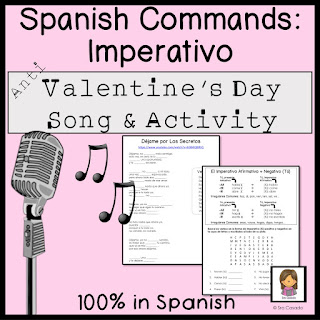I have to admit that New Year's Eve is just about my least favorite holiday. HOWEVER, I do love the clean slate a new year brings and I enjoy challenging myself to become a better version of myself through New Years Resolutions!
I will spare you the "I will exercise" and "I will get more sleep" resolutions, and instead share with you my resolutions to help my boys increase their Spanish proficiency this year.
Even though we are primarily an OPOL household (with my husband as the native Spanish speaker), I find that I need to step up on the target language teaching as COVID has really put some roadblocks in their Spanish learning:
** We have not been to Spain since summer of 2019.
** My older son has continued his Spanish learning through ALCE, but primarily through zoom since spring of 2020 due to COVID restrictions. This is not ideal.
** My middle son tried to study with ALCE, but since zoom school is not for him, he learned zip and is no longer taking a Spanish class...strike that! He is taking the mandatory "Intro to Spanish" in his middle school, but he needs more.
** My younger son really struggles to put his thoughts together in Spanish. He did not begin his immersion Spanish classes last year due to COVID. He is enrolled this year and enjoys the classes, but tells me it is only about 50% in Spanish and all of the kids struggle to speak in the target language.
So here we go, Sra Casado's New Year Resolutions with regards to Spanish learning at home:
FOR THE FAMILY
All in all, I want to encourage my boys to speak, read, and hear more Spanish in their daily lives. Since we have not been able to travel or take fun classes in Spanish, learning and using Spanish has become more of a chore. We need to turn that around, poco a poco.
1. Read more books:
This resolution is especially focused on the little one who still loves for us to read to him. We have so many beautiful picture books in Spanish, but, at the end of the day, we often turn to old favorites in English. I propose working with my husband and son to create "Spanish book night" at least 3 times per week.
2. More songs / TV / movies:
My older boys have begun to find expressing themselves more and more difficult as they have gotten older and the majority of their friends only speak English. We began watching Casa de Papel together as a family, first with subtitles in English, then with subtitles in Spanish, and their confidence has soared! We need to continue this, and add in Spanish music during family meal times or once per month Spanish movies to practice even more!
3. Play more games:
What our non-disciplined family has found to be extremely helpful over the years is to have established routines when it comes to using Spanish. We know that we always play with Playmobil in Spanish. We know that bathtime is always in Spanish, etc. I think it would be fun to have certain games that we only play in Spanish.
3. Speak Spanish at dinner table:
Again with the routines! We began doing this in December but we need to continue. It's been a bit of a challenge to (1) remember and (2) reinforce when we do remember, but we will get there!
Sometimes we may find it difficult to find topics of conversation. In another post, I will talk about some games that we play to facilitate conversation... here is a favorite....
4. Get my boys involved in helping with my TpT store: Before COVID hit, my boys would help here and there with my Teachers Pay Teachers store. It was fun for them to try out the activities, and useful for me. Now that two of them are teenagers (how did that happen?!), they are able to help with other aspects of the store such as product creation and business strategy. I'm hoping if they can find that Spanish is useful (and so many people are interested in learning Spanish), they will be inspired to learn even more!
FOR ME:
1. Read more books in Spanish:
I feel like my days are so full as it is, but I want to make a concerted effort to read more this year, and especially to read more in Spanish. My son is reading En El Tiempo de las Mariposas by Julia Alvarez, and reading and discussing it with him will be my first read.
2. Read newspaper articles:
In preparation for the AP test this year, my older son will be reading a newspaper article per week and discussing it with his dad. I would like to participate in this as well.
3. Organize my reference files (digital and hard copy):
I am not looking forward to this one, but over the years, I have created, bought, and otherwise accumulated so many wonderful resources to teach and learn Spanish. However, they are in SO MANY different books, folders, boxes, notebooks, computers, files, external hard drives....I don't even know what I have anymore! (does this happen to anyone else?) I probably won't finish this project this year, but I do want to begin dedicating time to learning what I have and simplifying my Spanish materials to my favorites.
I know that this is a very ambitious list, and it's quite possible that we may not be able to do it all. However, it doesn't hurt to try, right? I can't wait to give it a go, see what works and what doesn't, and improve the family's Spanish in the meantime.
What are your 2022 New Years Resolutions for you and your family with regards to the target language?





































